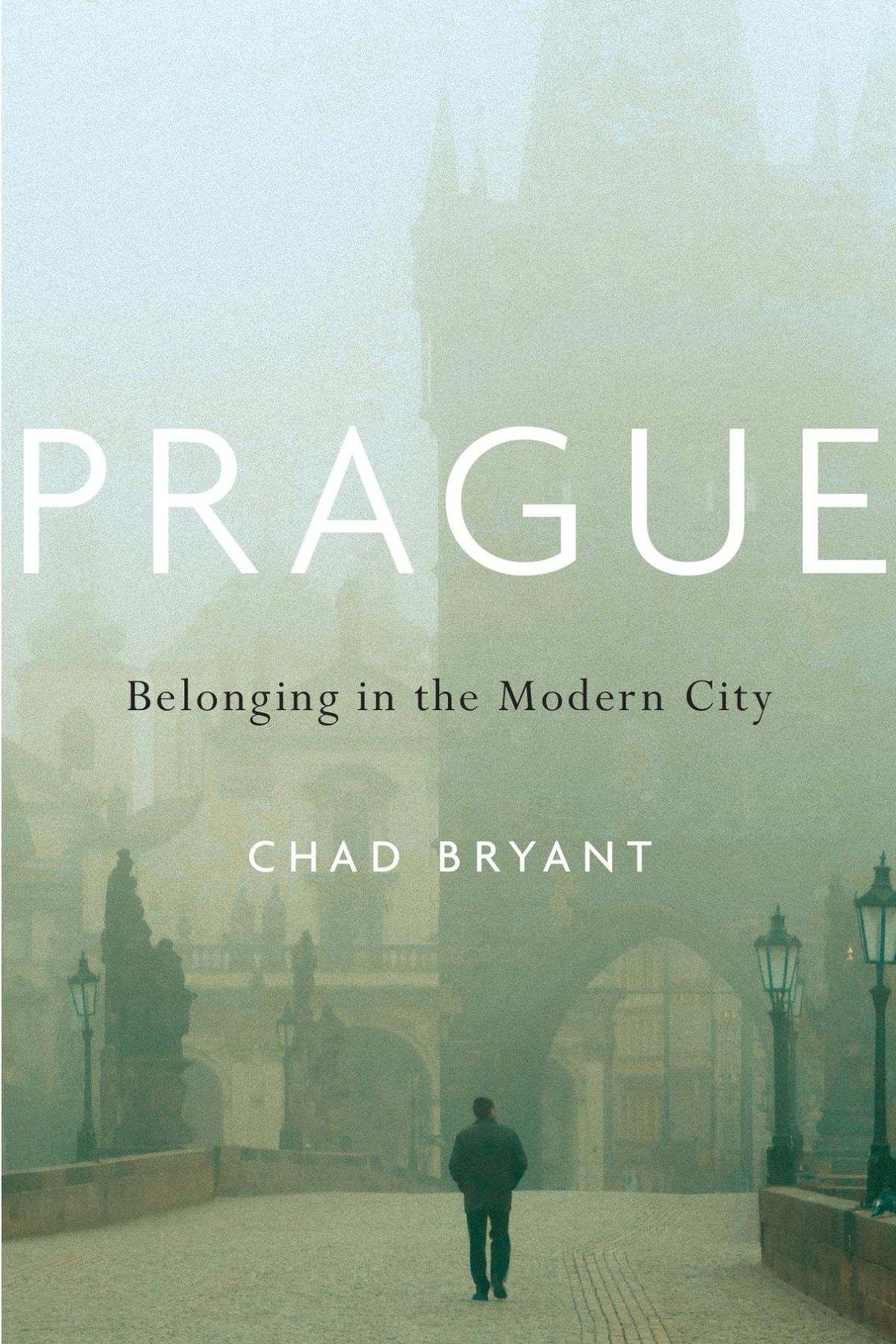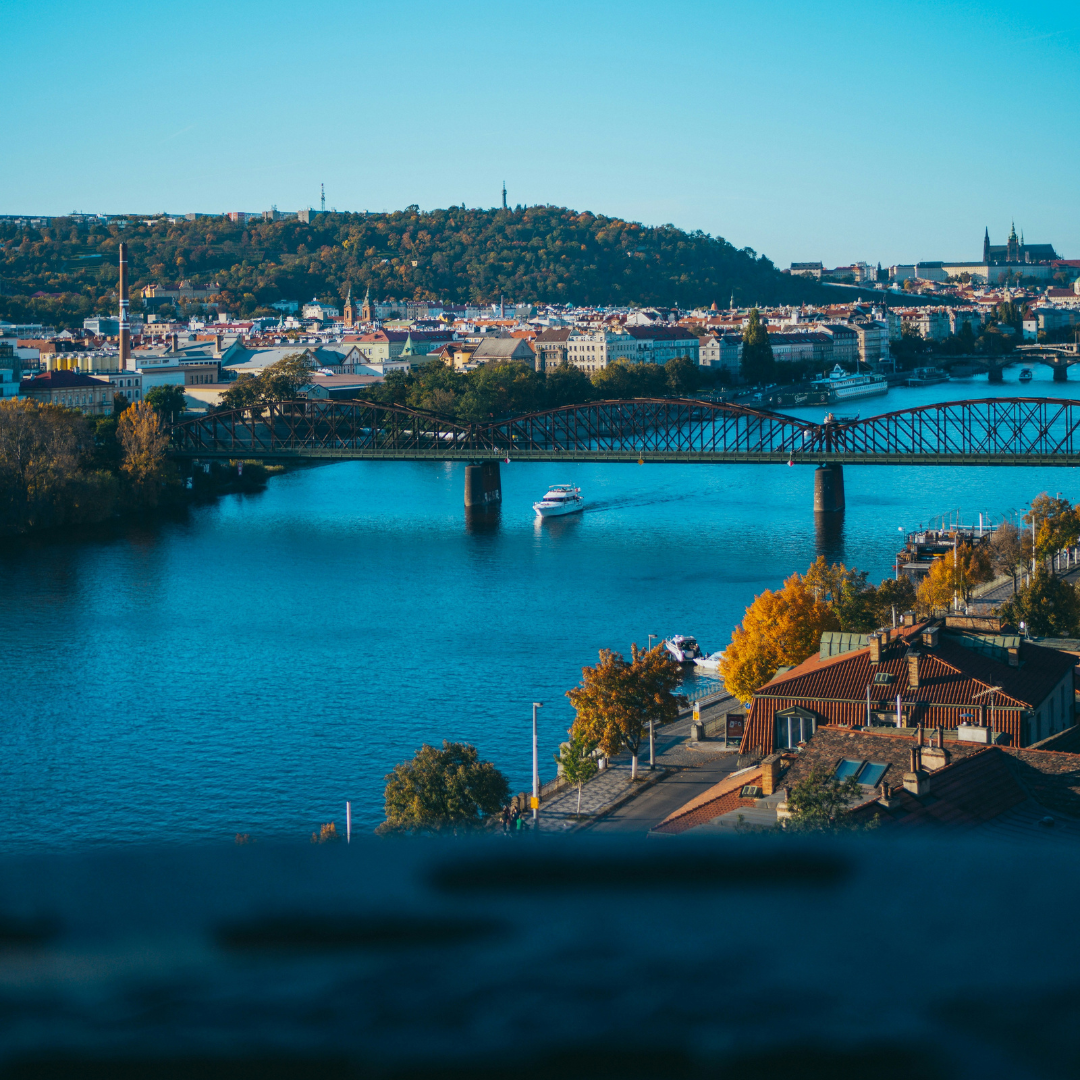Imagining Pragues of the past

Published by: Harvard University Press

Our individual identities involve the often-complex relationship between our personal, ethnic, national, and social identities. How we perceive and construct our identities depends on the religions we practice, the languages we speak, the communities we forge, and the places we occupy. Chad Bryant’s recent book Prague: Belonging and the Modern City explores the relationship between identity and place. The book asks us to consider what it means to belong to a city, what it means to be “Czech,” and how one might cultivate a sense of belonging in a place where one feels marginalized.
Bryant divides the book into five main chapters – German City, Czech City, Revolution City, Communist City, and Global City – following Prague’s history from the early 1800s when it was a Habsburg-controlled outpost of fewer than 100,000 inhabitants, to today’s global metropolis of over 1.3 million. The city’s history is told primarily through the perspectives of five marginalized individuals who, over the last two centuries, created their own sense of belonging in Prague. The historical narrators include Karel Zap, an aspiring Czech-language guidebook writer; Egon Erwin Kisch, a German-speaking, Jewish journalist and writer of feuilletons; Vojtěch Berger, a Bolshevik carpenter; Hana Frejková, a theatre actress; and Duong Nguyen Jirásková, a Czech-speaking Vietnamese blogger. Bryant uses the published written works produced by the five individuals, as well as ego documents such as diaries, to understand their sense of belonging while placing their experiences critically within their respective historical contexts. As we move into the late 20th and early 21st century, he also relies on oral history interviews with Frejková and Nguyen Jirásková to analyze and interpret their life stories.
the stories of individuals like Zap and Kisch follow the rise of nationalism, “exposing tensions between homogenizing national imaginations and the persistence of urban diversity”
Bryant acknowledges at the outset that a sense of belonging can be difficult to define. He maintains that we should refrain from understanding belonging as “innate and universal” (p. 9) but rather as a feature of how individuals create and engage in communities. Indeed, as Bryant observes, modern nation-states are imagined communities founded on notions of a shared historical past. Modern nations, therefore, are largely built on myths. Cities act as the “mecca, museum, and stage” for a nation, upon which the events of an imagined shared history are envisioned (p. 11). Bryant, who is a Professor of History at the University of North Carolina at Chapel Hill, has devoted much of his research to studying nationalism and urban history in Central and Eastern Europe. In this book, Bryant pays particular attention to the myth-making of the Czech nation. In the chapter “German City,” Karel Zap finds a sense of belonging among the steadily growing number of Czech-speaking middle-class citizens of Prague. Still a minority within the Habsburg Monarchy, these Czech speakers engaged in what historians now refer to as the Czech National Revival (České národní obrození); by writing his Prague guidebooks in Czech, Zap aimed to contribute to the creation of the Czech national identity. However, we see in the subsequent chapter “Czech City” that as the contingent of Czech speakers gains status and representation, other groups – such as German-speaking Jews, exemplified by Egon Erwin Kisch – experience marginalization. As Bryant observes, the stories of individuals like Zap and Kisch follow the rise of nationalism, “exposing tensions between homogenizing national imaginations and the persistence of urban diversity” (p. 5). While “nationalist imaginations” need not be “nefarious” (p. 253), nationalism can be a dangerous endeavor when political leaders or others manipulate existing fears to justify violence.
Philosopher Radek Chlup argues that there are two competing myths associated with Czech identity that have been important for Czechs since the 19th century: “the particularist conception, which defines the Czech nation through its unique ethnic, cultural and historical heritage, and the universalist conception, which celebrates the nation’s civilizational, moral and spiritual achievements.”1 But in the 20th century, identity for “Czechs” in Prague often involved one’s adherence or divergence from a particular political group, in addition to one’s self-concepts of one’s ethnic and national identity. The chapter “Revolution City” follows Vojtěch Berger, a Bolshevik carpenter during the interwar period. Berger, who feels betrayed by the political promises made but not kept by the Social Democrats, spent the interwar years as an active member of the Communist Party. It is his political practices – taking part in May Day parades, for example – that give him a sense of belonging. The Nazi occupation of Czechoslovakia and the establishment of the Protectorate of Bohemia and Moravia in 1939 suspend Berger’s political activity, making him a “witness, but not a participant, in the world around him” (p. 146).
Taking the steps down, I walked through Podskalí and thought of Kisch’s ventures into old Czech pubs; on Žofín island, I imagined Praguers of the past strolling alongside the Vltava.
Interestingly, the Czechoslovak Communist Party’s rise to power following the Second World War and the Party’s coup d’état in 1948 did not bring Berger a renewed sense of belonging in the city. During Czechoslovakia’s communist period, many Czechs and Slovaks experienced marginalization, repression, and violence based on their political nonadherence, in addition to their religious adherences and socioeconomic background (i.e., coming from a family of farmers – the so-called village rich – or academics, for example, made one bourgeoisie). The chapter “Communist City” centers on the life and family history of Hana Frejková, who grows up under communism and, in her adult life, grapples with the trauma stemming from her father’s execution as a result of the Rudolf Slánský trial in 1952. Frejková’s father was Jewish, and Bryant examines the antisemitism at the heart of the fabricated political trial held under Stalinist pressure.
Recently, I went on my annual walk to Vyšehrad to appreciate Prague in its autumnal colors. From the old fortifications, I took in the views from where Bryant’s book begins. Taking the steps down, I walked through Podskalí and thought of Kisch’s ventures into old Czech pubs; on Žofín island, I imagined Praguers of the past strolling alongside the Vltava. I also considered the book’s final chapter, which centers on the experiences of Duong Nguyen Jirásková, a Czech-speaking Vietnamese blogger. Nguyen Jirásková’s blog posts from the early 2000s deal with her attempts to reconcile her identity as a Czech-Vietnamese person in the Czech Republic. For Nguyen Jirásková, finding a sense of belonging in Prague was, and continues, to be challenging, as she finds herself both in and between two communities: the Vietnamese diaspora in the Czech Republic, and the Czech community she grew up in. As a Czech-American myself, I related deeply to this chapter, as can anyone who has felt like their social worlds span more than one place.
Prague: Belonging and the Modern City serves not only as a resource for those seeking to understand what it means to belong to a place but also as a guidebook to the city’s urban history. By asking us to step into the lives of the book’s five historical narrators, Bryant calls on the reader to also imagine Pragues of the past. Walking through the city today, one can conjure these images of past Prague and reconcile them with present perspectives.
Anna West is a recent graduate of Charles University (Univerzita Karlova) with a Master of Arts in Oral History and Contemporary History. Her dissertation focused on Czech immigration to California in the 1960s, as well as Czech identity expression and transnationalism.
1 Chlup, Radek. (2020). “Competing myths of Czech identity”, New Perspectives, 28(2), 179-204. https://doi.org/10.1177/2336825X20911817
